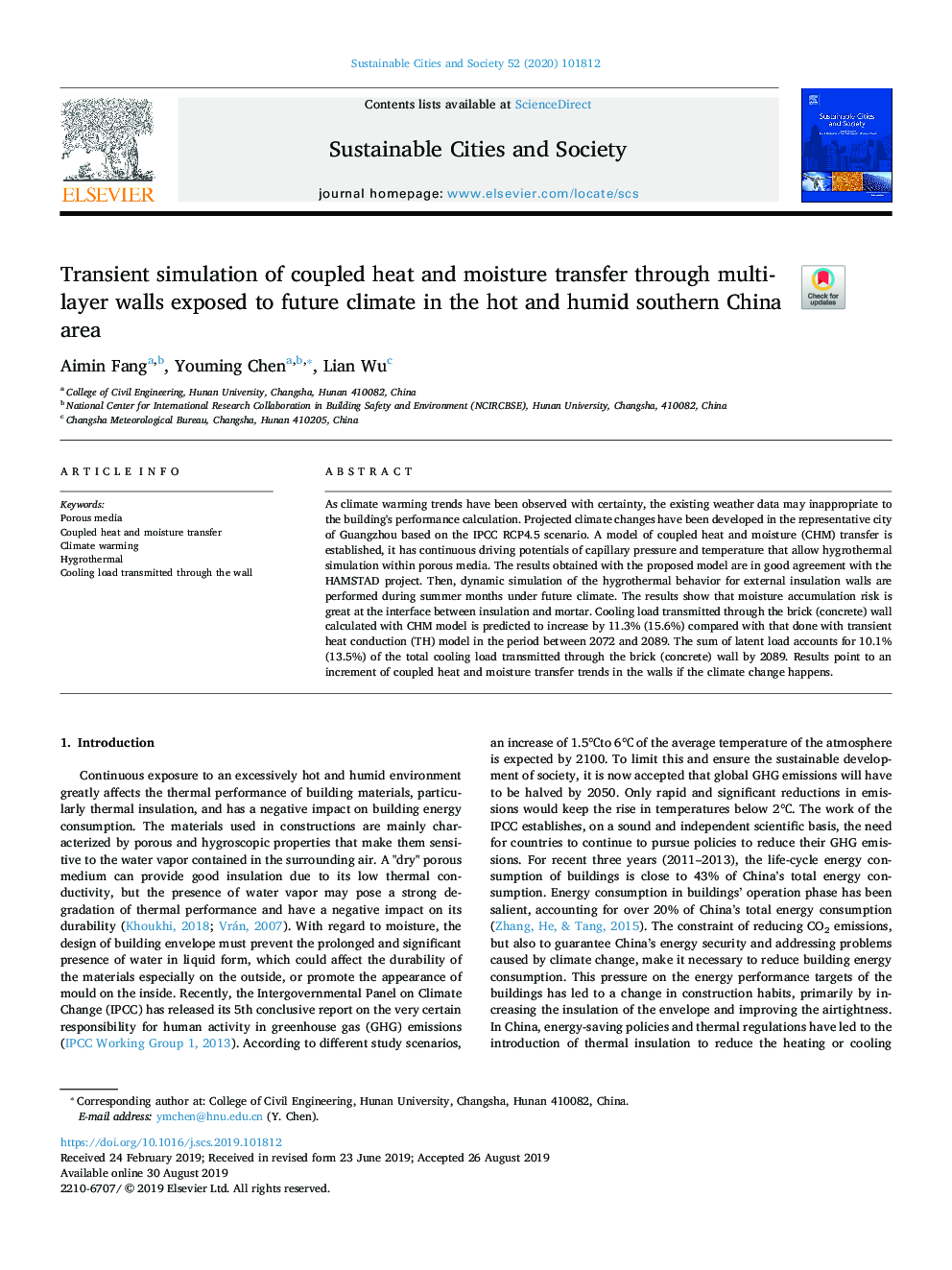| Article ID | Journal | Published Year | Pages | File Type |
|---|---|---|---|---|
| 13422819 | Sustainable Cities and Society | 2020 | 12 Pages |
Abstract
As climate warming trends have been observed with certainty, the existing weather data may inappropriate to the building's performance calculation. Projected climate changes have been developed in the representative city of Guangzhou based on the IPCC RCP4.5 scenario. A model of coupled heat and moisture (CHM) transfer is established, it has continuous driving potentials of capillary pressure and temperature that allow hygrothermal simulation within porous media. The results obtained with the proposed model are in good agreement with the HAMSTAD project. Then, dynamic simulation of the hygrothermal behavior for external insulation walls are performed during summer months under future climate. The results show that moisture accumulation risk is great at the interface between insulation and mortar. Cooling load transmitted through the brick (concrete) wall calculated with CHM model is predicted to increase by 11.3% (15.6%) compared with that done with transient heat conduction (TH) model in the period between 2072 and 2089. The sum of latent load accounts for 10.1% (13.5%) of the total cooling load transmitted through the brick (concrete) wall by 2089. Results point to an increment of coupled heat and moisture transfer trends in the walls if the climate change happens.
Related Topics
Physical Sciences and Engineering
Energy
Renewable Energy, Sustainability and the Environment
Authors
Aimin Fang, Youming Chen, Lian Wu,
